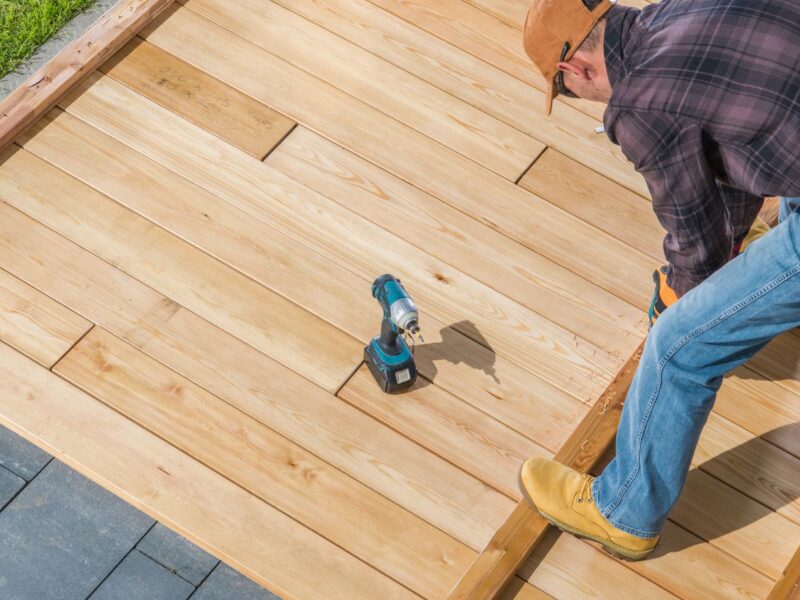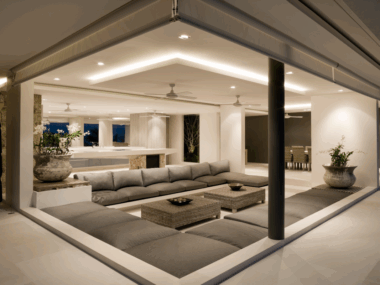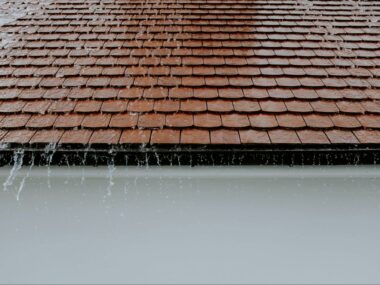Creating a deck can turn outdoor areas into welcoming havens that boost the value of your property and provide a setting for unwinding with loved ones or soaking in the beauty of the outdoors. However, understanding the aspects of constructing a deck is crucial for the success of the endeavor.
Exploring the expenses involves considering materials, labor costs, deck size, and other key factors that contribute to the overall cost. This guide is designed to streamline the process and help individuals make informed choices, answering questions like, ‘How much does it cost to build a deck?’
Exploring the Expenses Associated with Materials
Choosing the materials you use for your deck has a significant impact on the total costs involved in the project. Wood continues to be a favored option because of its timeless charm and inherent attractiveness. Treated lumber is a cost-effective choice, though it requires frequent upkeep. Cedar and redwood are alternatives, offering natural resistance to insects and decay. Composite materials may be more expensive upfront, but they provide longevity and require less maintenance, making them an appealing choice for long-term investments.
Assessing Labor Costs
Labor costs are an important part of the expenses involved in constructing a deck. Having the deck professionally built by contractors usually adds an additional cost, depending on the complexity of the design, the location, and the expertise of the contractor. Opting for a straightforward design can reduce labor costs without compromising quality. Comparing quotes from various professionals can help you find trustworthy services at competitive prices.
Thinking about the Dimensions and Style of the Deck
The size of the deck has a direct impact on the overall cost of construction. Larger decks require more materials and labor, which increases the expenses. Likewise, intricate designs that incorporate custom elements, such as built-in seating areas or planters, tend to drive up the cost. It’s essential to strike a balance between achieving aesthetic appeal and adhering to budget constraints.
Opting for simpler designs can still provide cost-effective solutions that enhance outdoor living spaces effectively.
Diving into Extra Features
Extra features allow for personalization but may increase expenses. Railings are essential for safety on decks, and materials such as glass or metal can add a stylish touch. Light fixtures improve the ambiance, and pergolas offer shade and protection from the sun. Incorporating these features requires thoughtful planning to avoid exceeding the budget. Focusing on essential components guarantees functionality without inflating costs.
Taking Into Consideration Permits and Regulations
Constructing a deck typically requires following local regulations and acquiring the necessary permits, which can vary depending on where you live and the complexity of the project. Failing to obtain the proper permits could lead to penalties or even the need to dismantle your structure. It’s wise to consult with local officials or experts to ensure compliance with regulations, which can save you time and avoid potential legal issues.
Assessing the Expenses for Upkeep
Regular maintenance is essential for managing long-term expenses. For wood decks, this means periodically sealing and staining the wood to protect it from the elements and prevent damage that may require costly repairs or replacements. On the other hand, composite decks require less frequent maintenance, which ultimately lowers the overall upkeep costs. It’s wise to factor in maintenance requirements when selecting decking materials to ensure they fit within your long-term budget.
Planning for Unexpected Costs
During construction, unexpected costs may arise due to issues like soil problems or pest infestations, which can lead to additional expenses. To avoid financial strain, it’s important to set aside a contingency fund.
It’s recommended to allocate 10 to 15 percent of your budget for any surprises that may come up, ensuring a smoother project flow as it moves forward.
Summary
Constructing a deck involves various expenses, from materials and labor to additional features. Considering all factors ensures a successful project that stays within budget constraints. Choosing the right materials, assessing labor costs, and planning for unexpected expenses all play a crucial role in making the process smooth. Prioritizing essential elements while leaving room for customization can help you achieve your outdoor sanctuary without going over budget. With thoughtful preparation and well-informed decisions, creating your dream deck becomes a feasible and achievable objective.












